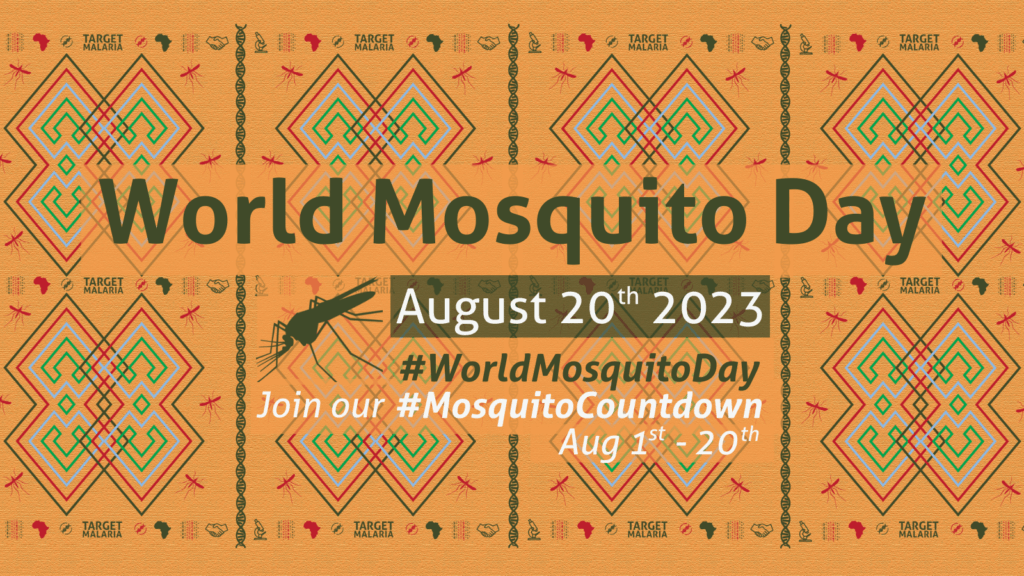Why World Mosquito Day?


Welcome to World Mosquito Day 2023! World Mosquito Day is a stark reminder of mosquitoes’ devastating impact on global health. This day is significant as it commemorates Sir Ronald Ross’s groundbreaking discovery in 1897 that linked mosquitoes to malaria transmission. Today, as we face a significant increase in mosquito-borne diseases worldwide, raising awareness and taking collective action is essential to combat this pressing health challenge.
The Rising Burden of Mosquito-Borne Diseases
Mosquito-borne diseases continue to place a heavy burden on millions of people across the globe. Among the most prevalent are zika, chikungunya, dengue, West Nile River virus, yellow fever and malaria. These diseases cause severe health problems, strain healthcare systems, and hinder socio-economic development in affected regions. Understanding the characteristics and transmission of each disease is crucial in combating its spread.
Vector-borne diseases account for more than 17% of all infectious diseases, causing more than 700 000 deaths annually. Malaria, transmitted to humans through the bites of infective female Anopheles mosquitoes, affects over 200 million individuals annually, predominantly in sub-Saharan Africa. Dengue fever, transmitted by Aedes mosquitoes, impacts approximately 390 million people globally annually, while outbreaks of chikungunya and zika virus cause widespread concern due to their association with severe health complications. To combat these diseases effectively, substantial investments of around US$ 350 million annually are necessary for public health infrastructure, research, vector control programs, diagnosis, treatment, and surveillance efforts. Beyond direct healthcare expenses, the economic cost encompasses reduced productivity, workforce absenteeism, and strains on healthcare systems, making investment in mosquito control and prevention imperative to alleviate their significant impact on societies worldwide.
Understanding Zika Virus, Chikungunya, Dengue, West Nile River Virus, Yellow Fever, and Malaria
Malaria: Malaria is a life-threatening disease caused by parasites transmitted to people through the bites of infective female Anopheles mosquitoes. There were an estimated 619,000 malaria deaths globally in 2021, and malaria cases continued to rise between 2020 and 2021. Africa carries a disproportionately high share of the global malaria burden. In 2021, the region was home to 95% of malaria cases and 96% of malaria deaths. Children under 5 accounted for about 80% of all malaria deaths in the Region. Malaria is a preventable and curable disease.
Zika Virus: Transmitted primarily through the Aedes mosquito, the same mosquitoes that spread dengue and chikungunya viruses. Zika virus gained global attention in recent years due to its association with severe congenital disabilities and neurological complications. Climate change could cause a dramatic uptick in Zika cases by altering the range of disease-spreading mosquitoes as previously uninhabitable areas become warmer and more humid. By 2050, an additional 1.3 billion more people will be living in areas where Zika can spread if nothing is done to combat warming temperatures. Of this, 1.3 billion, 737 million people would be living in temperatures allowing Zika transmission year-round.
Chikungunya: Chikungunya is a mosquito-borne viral disease caused by the chikungunya virus (CHIKV), and transmitted by mosquitoes, most commonly Aedes (Stegomyia) aegypti and Aedes (Stegomyia) albopictus. Chikungunya causes fever and severe joint pain, often debilitating and varies in duration. There is currently no approved vaccine or specific treatment for chikungunya virus infections. Since 2004, outbreaks of CHIKV have become more frequent and widespread, caused partly due to viral adaptations allowing the virus to be spread more easily by Aedes albopictus mosquitoes. CHIKV has now been identified in over 110 countries in Asia, Africa, Europe and the Americas.
Dengue: Dengue (break-bone fever) is a viral infection caused by the dengue virus (DENV), that is transmitted to humans through the bites of infective female mosquitoes, primarily the Aedes aegypti mosquito. It is more common in tropical and subtropical climates. About half of the world’s population is now at risk of dengue with an estimated 100–400 million infections occurring yearly. There is no specific treatment for dengue/severe dengue, and early detection and access to proper medical care considerably lower fatality rates of severe dengue.
West Nile Virus: West Nile virus (WNV) is the leading cause of mosquito-borne disease in the continental United States. Mosquitoes of the genus Culex are generally considered the principal vectors of WNV. West Nile virus can cause a fatal neurological disease in humans. However, approximately 80% of people who are infected will not show any symptoms. West Nile virus is mainly transmitted to people through the bites of infective mosquitoes.
Yellow Fever: Aedes and Haemagogus mosquito species are the main carriers, and a bite from an infected female can lead to symptoms such as headache, fever, muscle pain, and nausea. The disease got its name because the infection can cause jaundice, which causes the skin and whites of the eyes to have a yellow tinge.
Tackling the rise of mosquito-borne diseases
Climate change, urbanisation, and vector resistance are some of the major risk factors behind the increasing number of outbreaks of malaria parasites and viruses around the world. While all these diseases are spread through female mosquitoes, they are viruses, except for malaria, which is caused by parasites. Controlling a parasite is a lot more difficult because unlike viruses, which replicate using a host cell, parasites have several life stages and may rely on different hosts for their development and transmission. These complex life cycles make it harder to target and eliminate them at various points in their development.
Tackling the rise of mosquito-borne diseases requires concerted efforts from individuals, communities, and governments worldwide. Implementing mosquito control measures, deepening the engagement of communities about eliminating disease outbreaks, fostering global collaboration, funding support for initiatives aimed at eradicating these diseases, and investing in research to develop new vaccines, drugs, and technologies to combat mosquito-borne diseases, are key steps to advancing the fight against the world’s deadliest creature. Innovations, such as gene drive approaches for vector control, could help further the cause of a malaria-free world. Let this day serve as a call to action to combat the rise of mosquito-borne diseases and protect the well-being of the global population.
